Let me share my Cebu Lechon journey with you. When I visited Carcar Public Market during my vacation in Cebu, I couldn't believe my luck in meeting Manang Gloria, who's been making lechon for over 30 years. Between sips of hot sikwate (native hot chocolate), she taught me her family's lechon secrets - from picking the right pig to getting that perfect crispy skin that makes Cebu Lechon famous. She showed me that while making lechon takes time and patience, it's not as complicated as people think.
After countless tries and lunches testing this recipe, I can now share with you this simpler version that still captures that authentic Cebu Lechon taste: the crispy, golden-red skin, and juicy meat packed with lemongrass and garlic that made even Anthony Bourdain call it "the best pig ever."
If you've been afraid to try making lechon at home, don't worry - I've broken down all the steps to make it easier for you to create this special dish for your next family celebration.
Historical Note
Cebu Lechon's distinct style originated in Carcar City, where the unique combination of herbs and spices was perfected over generations. The addition of pasotes leaves, found only in Carcar and Vigan, gives authentic Cebu Lechon its distinctive flavor profile.
Remember: The key to perfect Cebu Lechon lies in patience, attention to detail, and respect for traditional methods. This recipe preserves authentic techniques while providing modern guidance for consistent results.
Jump to:
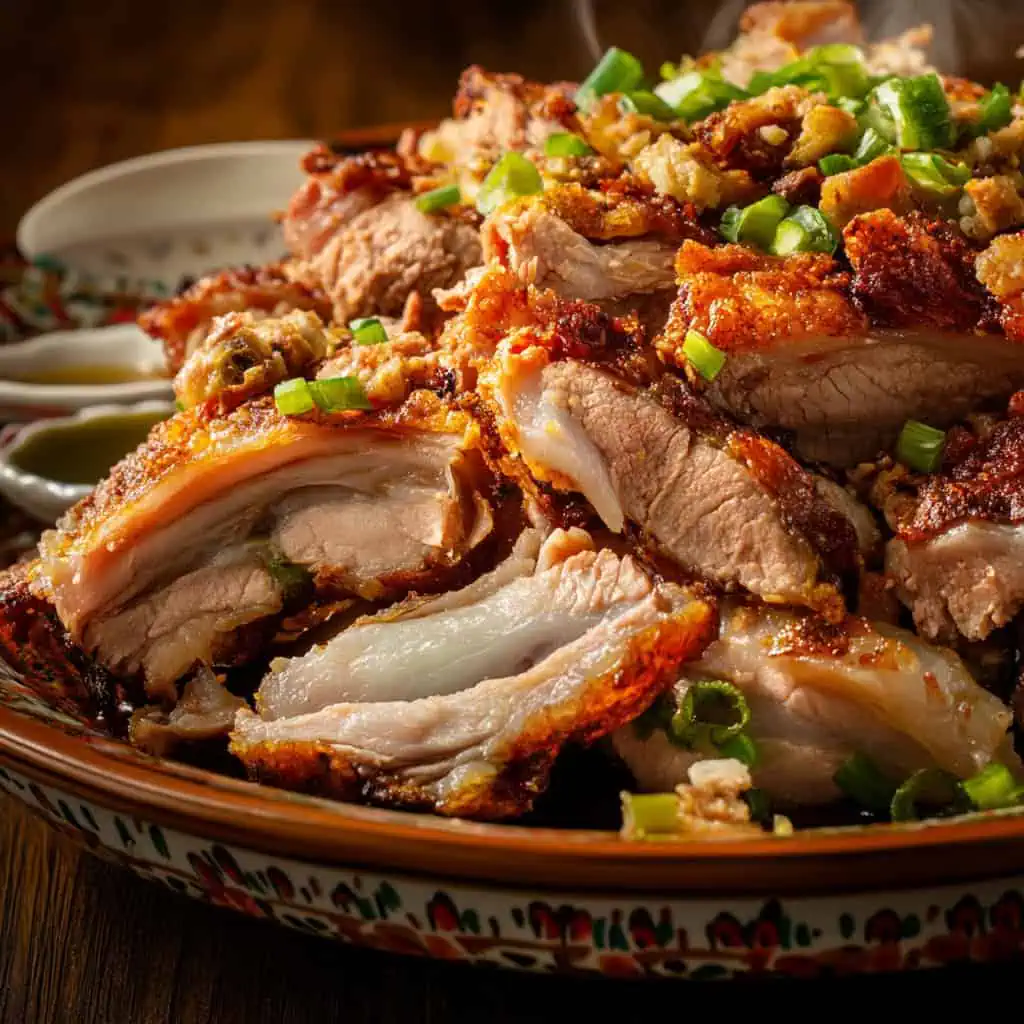
Why You'll Love This Recipe
- Authentic Cebuano flavors passed down through generations
- Perfectly crispy skin with juicy, aromatic meat
- Detailed instructions for foolproof results
- Traditional techniques with modern adaptations
- Perfect for special occasions and celebrations
- Complete with troubleshooting guide and pro tips
Ingredients
The ingredients in this Cebu Lechon recipe were carefully selected to create the authentic flavor profile that makes it famous worldwide. Lemongrass, garlic, and green onions form the aromatic base that infuses the meat with its distinctive herbaceous taste. Star anise adds a subtle licorice note that balances the richness of the pork, while bay leaves contribute depth and complexity.
The traditional pasotes leaves (when available) provide that authentic Carcar City touch that can't be replicated. The saba bananas are a clever addition that helps maintain moisture inside the pig during the long cooking process. Finally, the Pepsi or milk basting solution creates that signature crackling, mahogany-colored skin that Cebu Lechon is renowned for.
Together, these ingredients transform a simple roasted pig into a culinary masterpiece with complex layers of flavor.
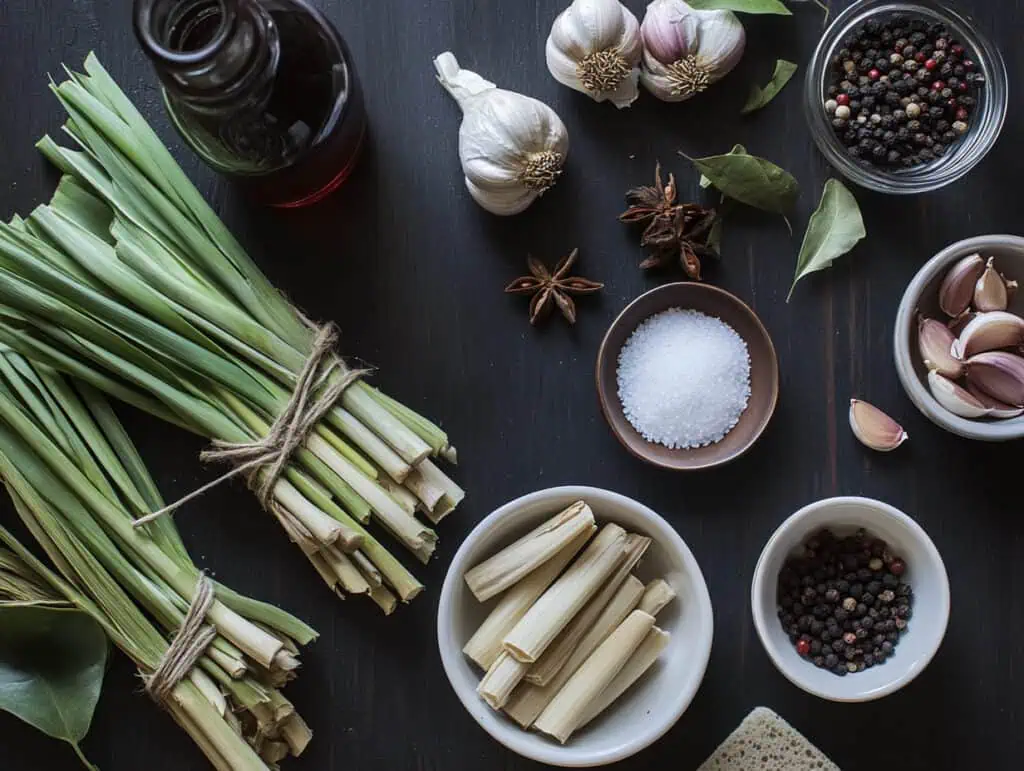
For the Pig:
- 1 whole native pig (18-20 kilos)
- Salt and black pepper to taste
- Soy sauce
For the Stuffing:
- 10 bundles lemongrass
- ¼ cup star anise
- 6 pieces bay leaves, cut into small pieces
- 5 cups crushed garlic
- 2 kilos green onion leaves
- 8 pieces half-cooked saba bananas (optional)
- Pasotes leaves (if available)
For Basting:
- Option 1: Pepsi or Coca-Cola
- Option 2: Evaporated milk and water mixture (3 parts milk to 1 part water)
Equipment
- Large Bamboo Pole (Kawayan) - For skewering and rotating the pig throughout the cooking process, ensuring even heat distribution.
- Charcoal Grill Setup - To provide the authentic smoky flavor and consistent heat needed for proper roasting.
- Meat Thermometer - Essential for monitoring the internal temperature (should reach 165°F/74°C) to ensure food safety.
- Heavy-Duty Butcher's Twine - For securing the stuffing inside the cavity during the long roasting process.
- Large Curved Needles - Necessary for properly stitching the cavity closed after stuffing.
- Clean Natural-Fiber Sponge - For applying the basting liquid evenly across the pig's skin.
- Large Work Surface - Provides adequate space for cleaning and preparing the pig.
- Heat-Resistant Gloves - Protects hands while handling hot equipment during the roasting process.
- Meat Hook - Assists with turning and positioning the pig during cooking.
- Drip Pan - Collects flavorful drippings that can be used for sauce or gravy.
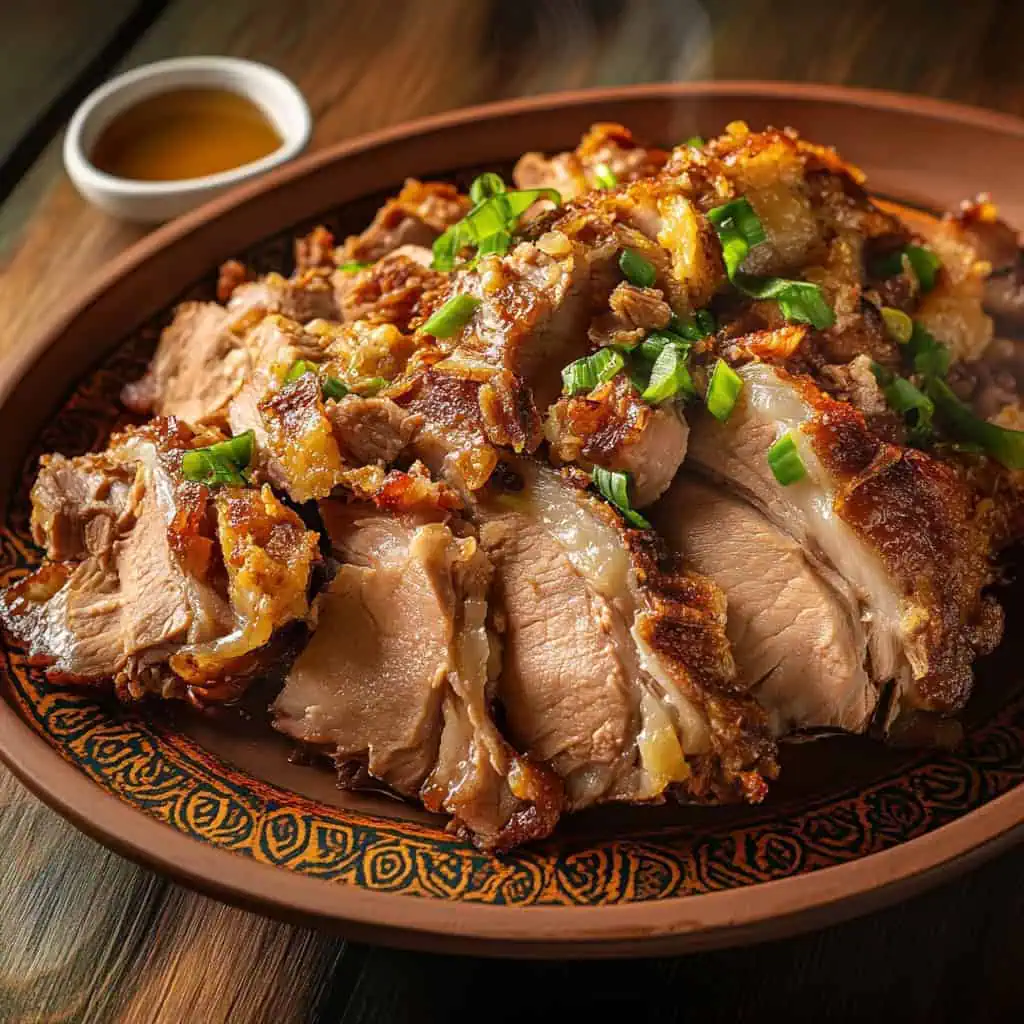
How To Make
- Start early in the morning when it's cooler. Thoroughly clean your pig by removing all hair follicles from the skin. Take out the innards, then wash and scrub the inside cavity until no blood remains. Pour hot water (165°F/74°C) inside the pig and make partial cuts along the rib area for even cooking.
- Pat the pig completely dry with clean cloth. Rub generous amounts of salt and black pepper all over the pig, inside and out. Brush the inside of the belly with soy sauce, making sure to coat all surfaces.
- Prepare your stuffing ingredients next. Crush the garlic and clean the lemongrass. Cut the bay leaves into smaller pieces. If you have pasotes leaves, prepare these too. Half-cook the saba bananas by boiling them briefly if you're using them.
- Start stuffing the pig by placing lemongrass bundles down the center of the cavity. Layer in the crushed garlic, star anise, cut bay leaves, and green onion leaves. Add the half-cooked saba bananas if using. Make sure everything is evenly distributed inside the cavity.
- Using a large needle and butcher's twine, carefully sew the cavity closed with tight, close stitches to keep all the stuffing secure during roasting.
- Set up your charcoal grill by arranging hot coals on both sides, but not directly under where the pig's belly will be. The cooking temperature should be around 350°F/177°C. Mount the pig on your bamboo pole, making sure it's secure.
- Mix your basting liquid - either the Pepsi or the mixture of evaporated milk and water (3 parts milk to 1 part water). Have this ready with a clean sponge for basting.
- Start roasting the pig, turning it slowly and consistently. Every 15-20 minutes, baste the entire surface with your chosen liquid using the sponge. Keep the rotation steady and maintain the charcoal heat by adding new coals as needed.
- Continue this process for 3-4 hours. You'll know the lechon is done when the skin is evenly golden-brown and crispy, and the internal temperature reaches 165°F/74°C when checked with a meat thermometer.
- Once done, let the lechon rest for 30 minutes before cutting and serving. During this time, prepare your preferred dipping sauce, traditionally spiced vinegar (suka), and accompaniments like puso (hanging rice).
- For best results, serve immediately while the skin is still crispy.

Tips from Lola's Kitchen
- Morning preparation is key - Start very early when temperatures are cooler for easier handling and better skin results.
- Choose the right pig - Native/free-range pigs provide superior flavor compared to commercial varieties.
- Patience brings perfection - Never rush the cooking process; slow and steady yields the best results.
- Consistent rotation - Maintain the same turning speed throughout cooking for even heat distribution.
- Listen to your lechon - During the final stage, you should hear a crackling sound from the skin.
- Save the drippings - The flavorful juices make an exceptional base for sauce or gravy.
- Skin preparation - Thoroughly drying the skin before cooking is critical for achieving that signature crispiness.
- Temperature control - Maintain consistent heat by adding small amounts of charcoal regularly rather than large amounts infrequently.
- Rest before serving - Allow the meat to rest for 30 minutes after cooking to redistribute juices.
- Cut strategically - Different parts of the lechon have varying textures and flavors; serve accordingly.
Substitutions
- No lemongrass? Use 1 cup of lemon zest mixed with ¼ cup minced ginger.
- No pasotes leaves? Substitute with a mixture of oregano and tarragon.
- No saba bananas? Use sweet potatoes or regular potatoes instead.
- No green onions? Regular onions will work, though the flavor profile will be slightly different.
- No fresh garlic? In a pinch, garlic powder can work (1 tablespoon = 8-10 cloves), but fresh is strongly preferred.
- Alternative basting liquids: Sprite, 7-Up, or coconut water can replace Pepsi/Coke.
- No bamboo pole? A large, sturdy metal spit can work if properly cleaned and prepared.
Troubleshooting
Skin Not Crisping:
- Ensure the pig is completely dry before cooking
- Check that the cooking temperature is consistently around 350°F
- Increase basting frequency to every 10-15 minutes
- Position the pig slightly closer to the heat source
Uneven Cooking:
- Rotate more consistently and at a slower pace
- Redistribute charcoal to address cooler areas
- Use aluminum foil as heat shields for areas cooking too quickly
- Consider partial cutting of thicker sections before cooking
Stuffing Falling Out:
- Use tighter, closer stitching with doubled thread
- Chop stuffing ingredients into smaller pieces
- Secure the ends with extra stitching
- Pre-mix stuffing with a binding agent like beaten egg
Meat Too Dry:
- Lower cooking temperature slightly
- Increase basting frequency
- Consider injecting moisture directly into thicker portions
- Add moisture-rich ingredients to the stuffing
Storage & Reheating
- Refrigerate leftovers within 2 hours of cooking
- Store meat and skin separately in airtight containers
- Consume within 3-4 days for best quality
- For reheating:
- Preheat oven to 350°F/177°C
- Place meat in a covered dish with a small amount of water
- Heat until internal temperature reaches 165°F
- For crispy skin, place separated skin pieces under a broiler for 1-2 minutes
- Never microwave the skin as it will become chewy and lose its crispness
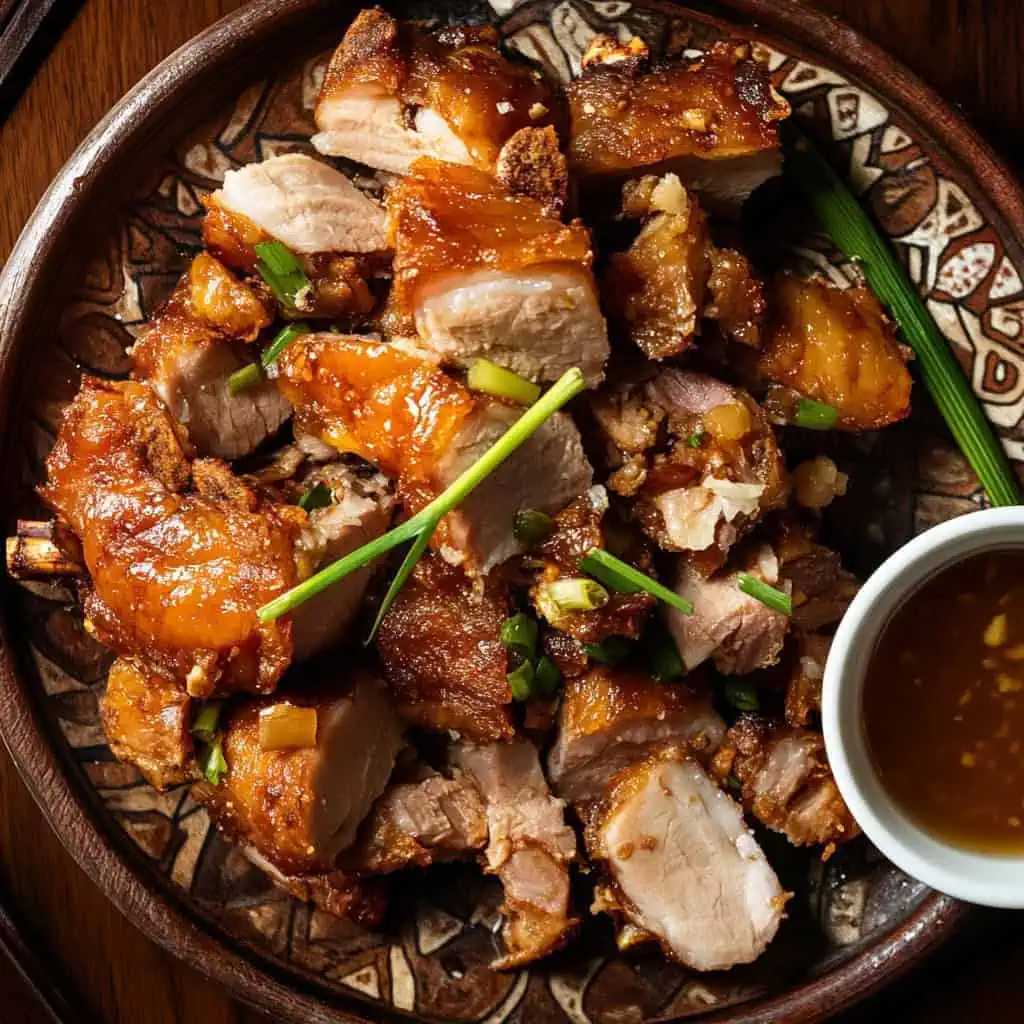
FAQ
How many people will one lechon feed?
An 18-20 kilo pig typically serves 20-25 people generously, depending on your side dishes.
Can I prepare the pig the day before cooking?
You can clean the pig the day before, but always stuff it just before cooking for food safety and optimal flavor.
What's the best wood for charcoal?
Traditional methods use malunggay or santol wood, but standard hardwood charcoal works well too.
Why use Pepsi or milk for basting?
The sugars in soda caramelize to create the signature color, while milk proteins help develop the crispy texture.
How long does it take to cook a whole pig?
For an 18-20 kilo pig, allow 3-4 hours of actual cooking time, plus 1-2 hours for preparation.
Is it possible to make a smaller version?
Yes! This recipe can be adapted for a suckling pig (5-7 kilos) with cooking time reduced to about 2 hours.
What's the most important part of making lechon?
Patience and consistent heat management are the keys to success.
How do I know when it's done without a thermometer?
When the skin is evenly golden-brown and makes a hollow sound when tapped, and the joint near the thigh moves easily.
What should I serve with lechon?
Traditional accompaniments include spiced vinegar, puso (hanging rice), achara (pickled papaya), and sometimes dinuguan (pork blood stew).
Can I freeze leftover lechon?
Yes, properly wrapped meat can be frozen for up to 3 months, but the skin is best consumed fresh as freezing affects its texture.
Related
Looking for other recipes like this? Try these:
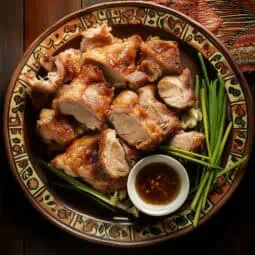
Authentic Cebu Lechon Recipe
Equipment
- Large Bamboo Pole (Kawayan) For skewering and rotating the pig
- Charcoal Grill Setup For even roasting
- Meat thermometer To ensure proper cooking temperature (internal temp should reach 165°F/74°C)
- Heavy-Duty Butcher's Twine For securing stuffing
- Large Curved Needles For stitching the cavity
- Clean Natural-Fiber Sponge For basting
- Large Work Surface For preparation
- Heat-Resistant Gloves For safety
- Meat Hook For handling and turning
- Drip Pan For collecting juices
Ingredients
For the Pig
- 1 whole native pig 18-20 kilos [Isang buong native na baboy]
- Salt and black pepper to taste Asin at paminta
- Soy sauce Toyo
For the Stuffing
- 10 bundles lemongrass tanglad
- ¼ cup star anise
- 6 pieces bay leaves dahon ng laurel, cut into small pieces
- 5 cups crushed garlic dinurog na bawang
- 2 kilos green onion leaves dahon ng sibuyas
- 8 pieces half-cooked saba bananas saging na saba, optional
- Pasotes leaves if available
Instructions
- Start early in the morning when it's cooler. First, thoroughly clean your pig by removing all hair follicles from the skin. Take out the innards, then wash and scrub the inside cavity until no blood remains. Pour hot water (165°F/74°C) inside the pig and make partial cuts along the rib area for even cooking.
- Pat the pig completely dry with clean cloth. Rub generous amounts of salt and black pepper all over the pig, inside and out. Brush the inside of the belly with soy sauce, making sure to coat all surfaces.
- Prepare your stuffing ingredients next. Crush the garlic and clean the lemongrass. Cut the bay leaves into smaller pieces. If you have pasotes leaves, prepare these too. Half-cook the saba bananas by boiling them briefly if you're using them.
- Start stuffing the pig by placing lemongrass bundles down the center of the cavity. Layer in the crushed garlic, star anise, cut bay leaves, and green onion leaves. Add the half-cooked saba bananas if using. Make sure everything is evenly distributed inside the cavity.
- Using a large needle and butcher's twine, carefully sew the cavity closed with tight, close stitches to keep all the stuffing secure during roasting.
- Set up your charcoal grill by arranging hot coals on both sides, but not directly under where the pig's belly will be. The cooking temperature should be around 350°F/177°C. Mount the pig on your bamboo pole, making sure it's secure.
- Mix your basting liquid - either the Pepsi or the mixture of evaporated milk and water (3 parts milk to 1 part water). Have this ready with a clean sponge for basting.
- Start roasting the pig, turning it slowly and consistently. Every 15-20 minutes, baste the entire surface with your chosen liquid using the sponge. Keep the rotation steady and maintain the charcoal heat by adding new coals as needed.
- Continue this process for 3-4 hours. You'll know the lechon is done when the skin is evenly golden-brown and crispy, and the internal temperature reaches 165°F/74°C when checked with a meat thermometer.
- Once done, let the lechon rest for 30 minutes before cutting and serving. During this time, prepare your preferred dipping sauce, traditionally spiced vinegar (suka), and accompaniments like puso (hanging rice).
- For best results, serve immediately while the skin is still crispy. If you have leftovers, refrigerate them within 2 hours and consume within 3-4 days.
- Remember: The key to perfect Cebu Lechon is patience and consistent attention. Never rush the cooking process, and keep rotating the pig at a steady pace throughout roasting.
Tips from Lola's Kitchen
- Start very early in the morning when temperature is cooler
- Use native/free-range pig for best flavor
- Never rush the cooking process
- Keep rotating speed consistent
- Listen for crackling sound in skin during final stage
- Reserve drippings for sauce
Nutrition
The Story Behind Cebu Lechon
If you've ever walked through Carcar Public Market at dawn, you know that magical moment when the first batch of lechon comes out, skin glistening like golden glass under the morning sun. But Cebu Lechon isn't just any roasted pig - it's a treasure that earned Cebu the title "Lechon Capital of the Philippines" and captured the heart of famous food critic Anthony Bourdain, who called it "the best pig ever."
The secret of Cebu Lechon started in the bustling streets of Carcar City, where families have been perfecting their recipes for generations. What makes it special? Unlike other regions' lechon that rely heavily on liver sauce, Cebu Lechon needs no sauce at all. The magic lies in its stuffing - a signature blend of lemongrass, garlic, green onions, and the mysterious pasotes leaves that can only be found in Carcar and Vigan.
Each neighborhood in Cebu puts its own spin on lechon, but Carcar's version stands out for its extra crispy skin and uniquely aromatic meat. Local lechoneros (roasted pig masters) start their day as early as 2 AM, carefully selecting native pigs and preparing their secret spice blends. The tradition of slowly roasting pigs over charcoal while constantly basting them with either soda or milk isn't just cooking - it's an art passed down through generations of Cebuano families.
Today, you'll find Cebu Lechon everywhere from simple family gatherings to grand fiestas, but the heart of lechon culture remains in Carcar Public Market. Here, vendors still follow traditional methods, roasting their pigs in the open air where the smell of herbs and crispy pork skin draws crowds from all over the country. It's not uncommon to see locals and tourists alike lining up before sunrise, eager to get their hands on the first batch of the day.
Modern food delivery services now ship Cebu Lechon nationwide, but true food lovers know that nothing beats having it fresh from the pit, where the skin still crackles and the meat stays perfectly juicy. Whether you're planning to make it at home or booking your next trip to Cebu, understanding the rich history of this dish helps you appreciate why every bite of Cebu Lechon tells a story of tradition, family, and Cebuano pride.
Remember, while many places claim to have the best lechon, there's a reason why Cebuanos say, "Dili lechon ang walay Cebu" (It's not lechon if it's not from Cebu). The combination of native ingredients, time-honored techniques, and generations of expertise makes Cebu Lechon more than just roasted pig - it's a cultural icon that represents the warmth and richness of Filipino culinary heritage.
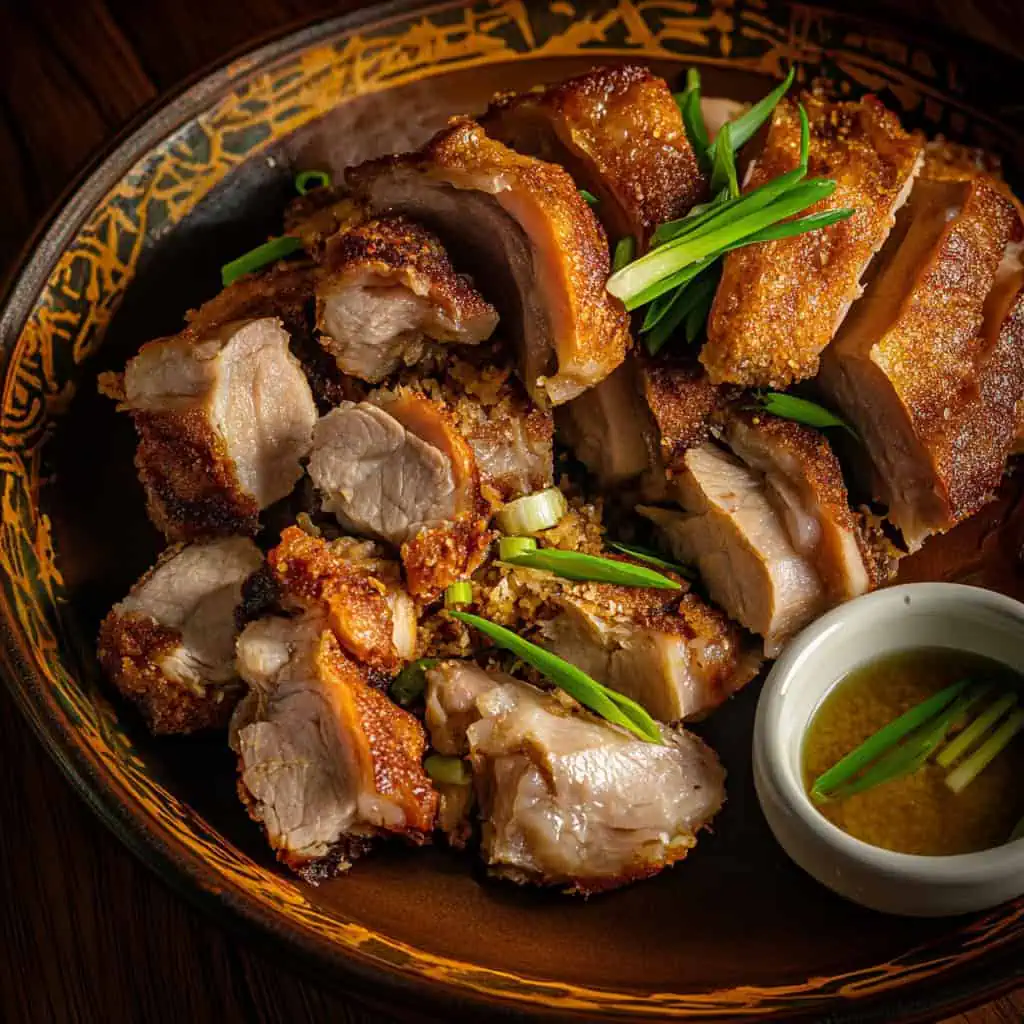

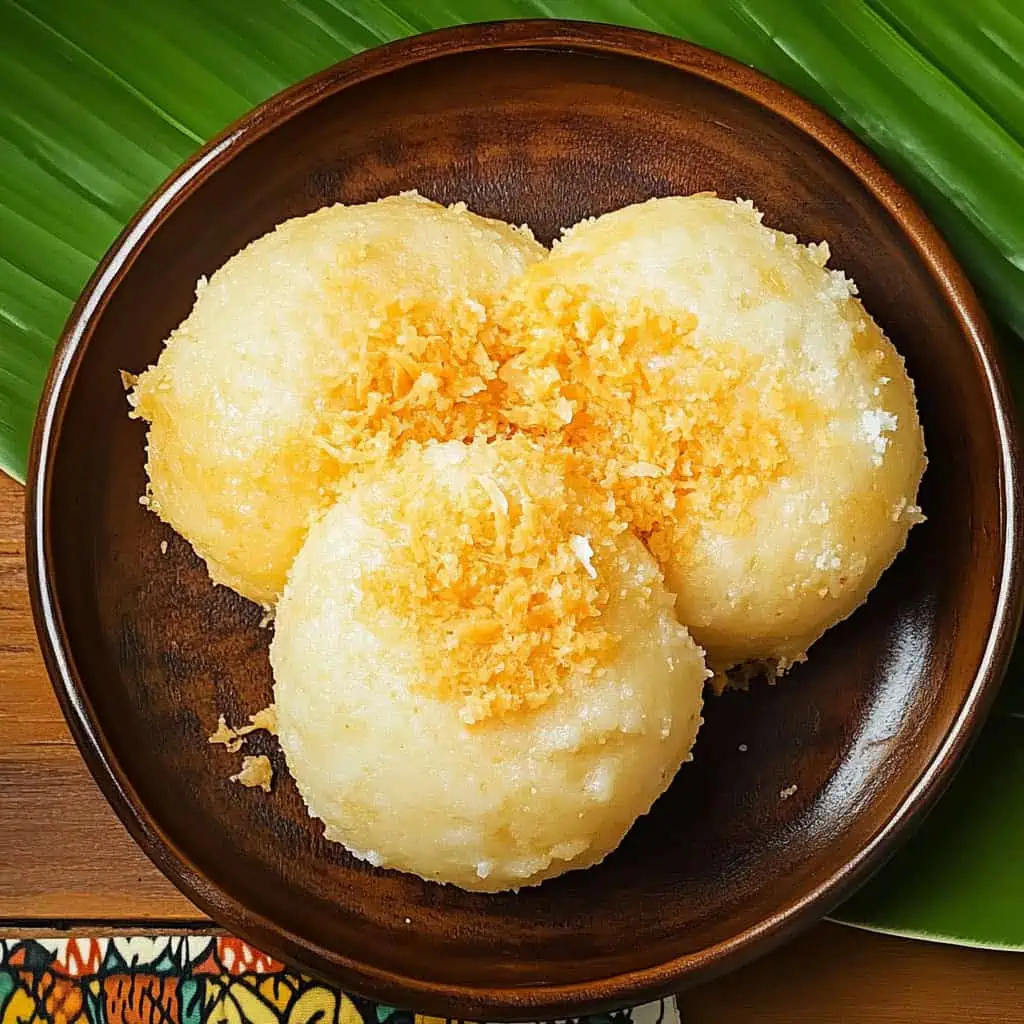
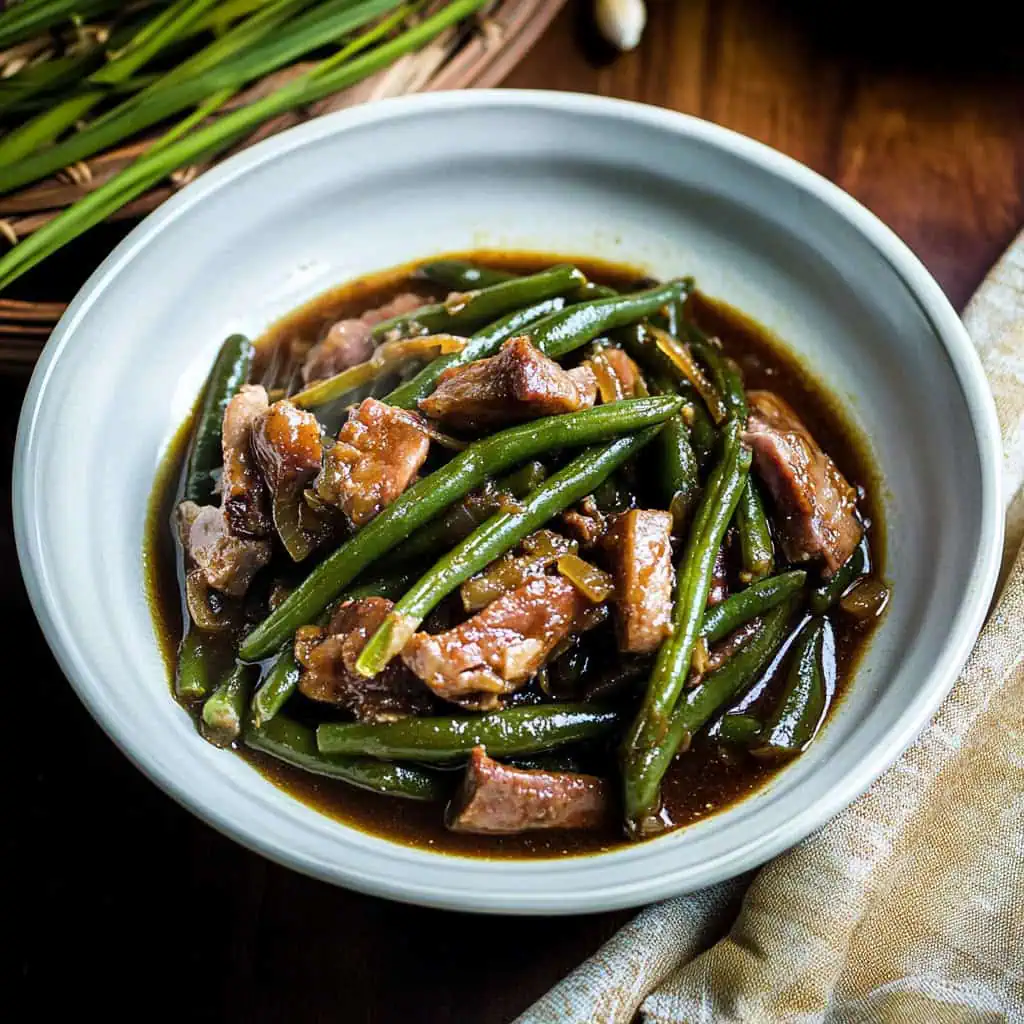

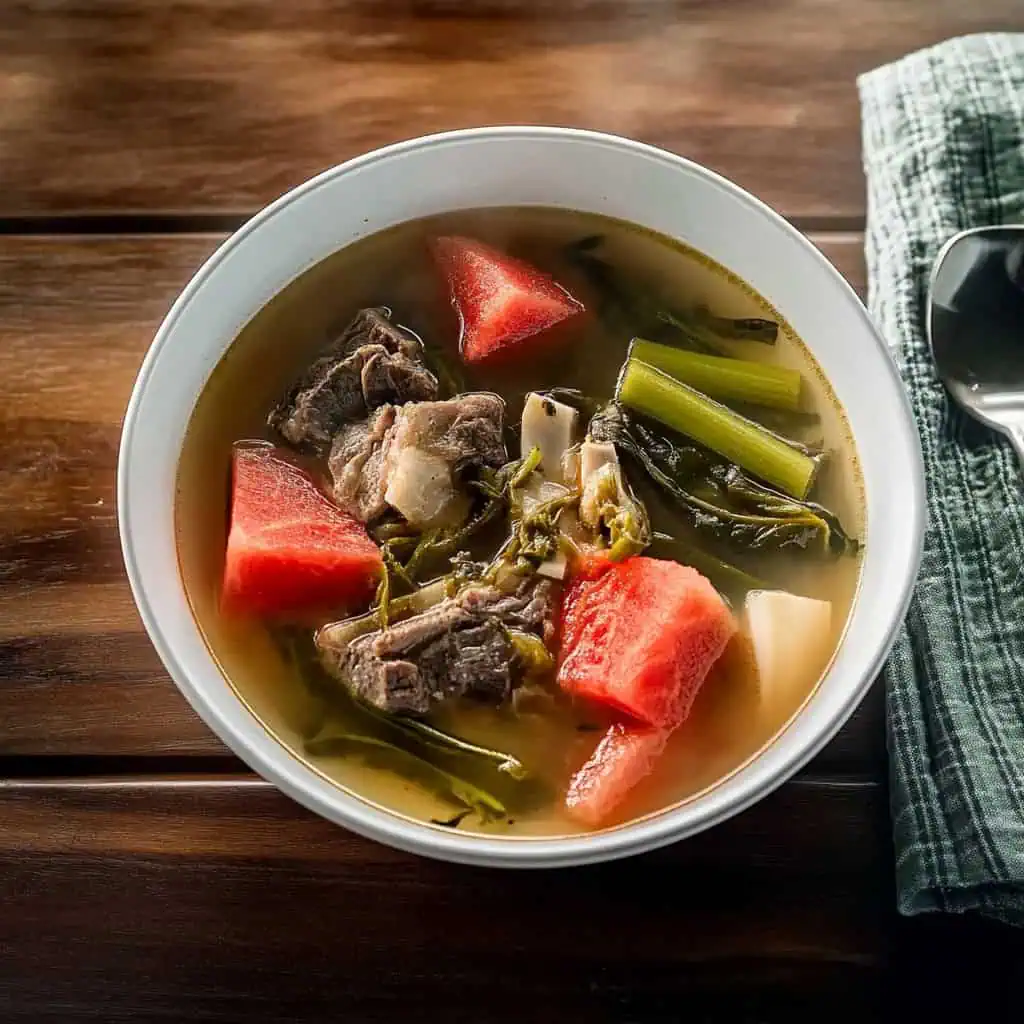
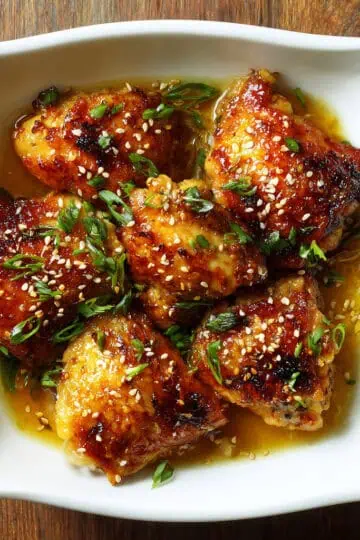
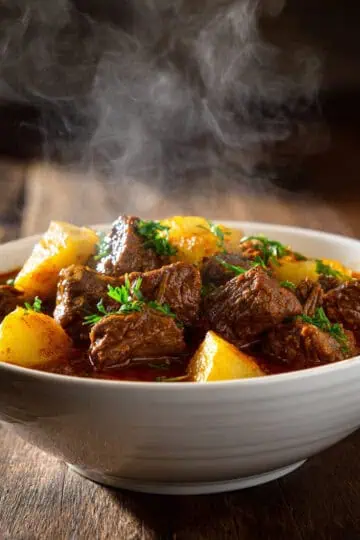
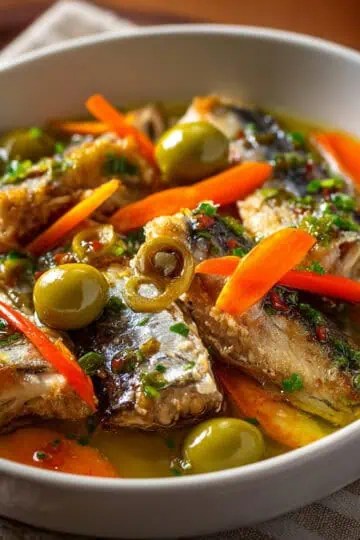

Comments
No Comments